How All The Crown Jewels Are Used in the Coronation Ceremony
When King Charles and Queen Camilla are crowned on May 6, central to the event will be the glittering Crown Jewels. The priceless objects will be carried into Westminster Abbey, with many of them also serving a specific purpose during the anointing and investiture section of the ceremony.
Famously kept at the Tower of London when not in use, most of the current set of jewels were made for the coronation of King Charles II in 1661 after the original set dating from medieval times was melted down when the monarchy was abolished under the leadership of Oliver Cromwell. Just one medieval item survives, which is the 12th century coronation spoon.
Here we take a look at all the Crown Jewels and what their purpose is on coronation day.
PROCESSION
The Crown Jewels will first be seen when they are processed into the Abbey ahead of the King and Queen at the start of the service. While many of the objects will also be used in the investiture section of the coronation, some will only be seen during the procession and then placed on the altar during the service. These include:
Two Royal Maces made of silver gilt over oak and dating from 1660 and 1665. They represent the sovereign’s authority and are also used during the State Opening of Parliament.
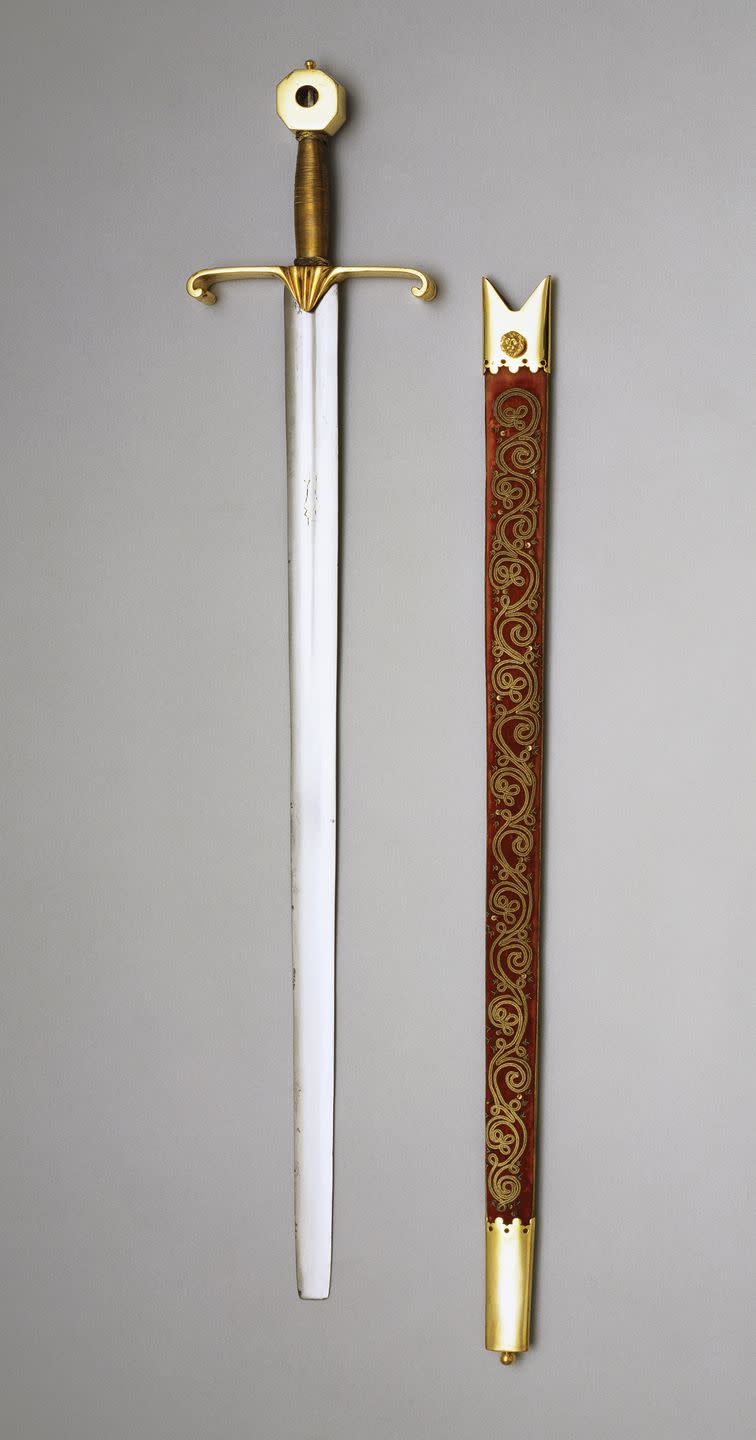
Three Swords representing mercy, spiritual justice and temporal justice. The one with the blunted end in the centre represents mercy and the monarch’s duty to be merciful. “We know that three swords have been carried pointing upwards without their sheaths in procession at English royal coronation since Richard I in 1189,” historian Charles Farris told T&C. These swords actually did survive being melted down by Cromwell but are not medieval and believed to date from the coronation of Charles I in 1626.
The St Edward’s Staff was made for the coronation of Charles II to replicate one believed to have belonged to Edward the Confessor. “It was remade in 1661 but they didn’t exactly know what it was for,” Charles Farris said. “It is still carried in processions and was carried in 1953 even though no-one is 100% sure what it symbolizes.”
Another important sword, also made for Charles II, is the Sword of State. “That sword is carried before the monarch representing royal power,” Charles Farris said. It is also used at the State Opening of Parliament.
ANOINTING
The first practical use of the jewels during the coronation ceremony comes at the anointing, during which the spoon and ampulla are used.
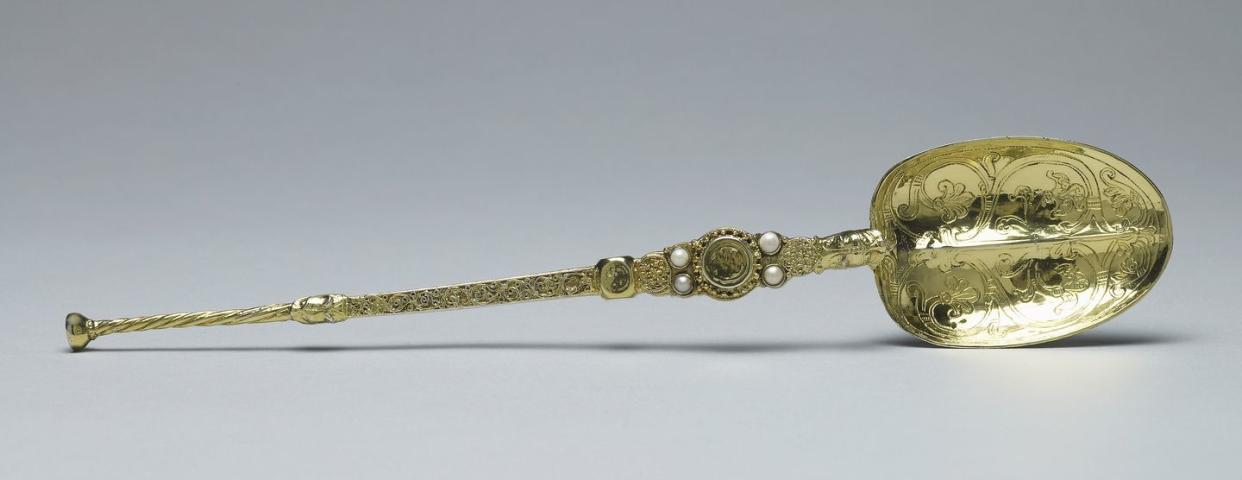
The Coronation Spoon, onto which the holy oil is poured by the Archbishop for the anointing, is notable for being the only medieval object to survive being melted down. It was bought instead of being destroyed and then sold back to Charles II. “Not only is it the only surviving object from the medieval coronation regalia but it’s actually the only surviving piece of 12th Century royal goldsmiths’ work to survive. So it’s incredibly culturally and artistically important as well,” Charles Farris said. “We know it was used in medieval ceremonies but we don’t exactly know how as they didn’t record it. Today it is used for the anointing.” Its oval bowl is divided into two parts.
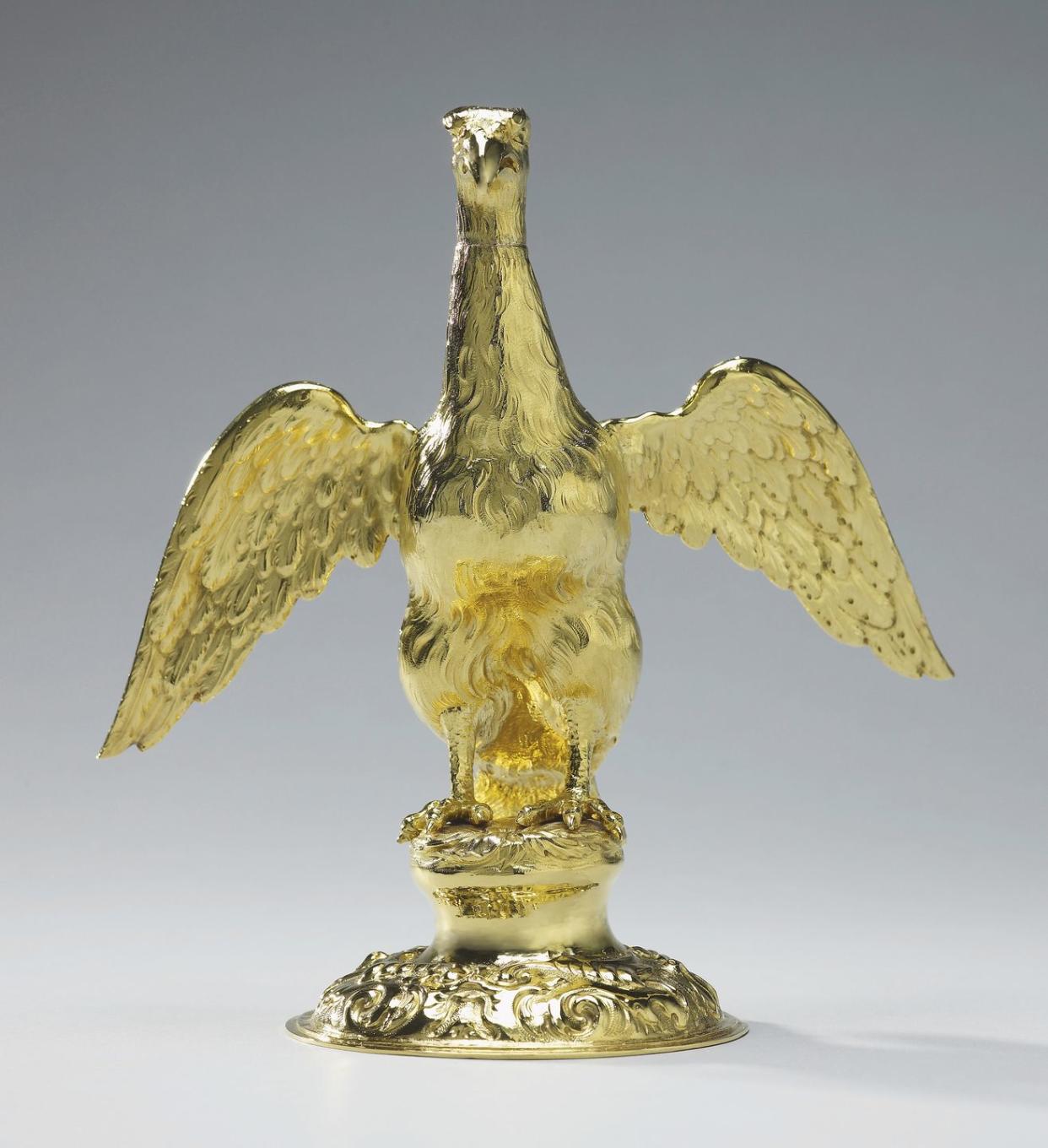
The Ampulla is a golden vessel in the shape of an eagle. The top can be screwed off for the oil to be poured out through the beak. “The eagle is an ancient symbol of kingship,” Charles Farris said. There is a 14th Century legend that the Virgin Mary appeared to St Thomas à Becket and presented him with a golden eagle and a vial of oil for anointing future Kings of England, which is what the original ampulla as thought to have been based on.
INVESTITURE
The big moment for the Crown Jewels really comes at the investiture section of the ceremony. Here, a number of items are presented to the monarch culminating in the crowning.
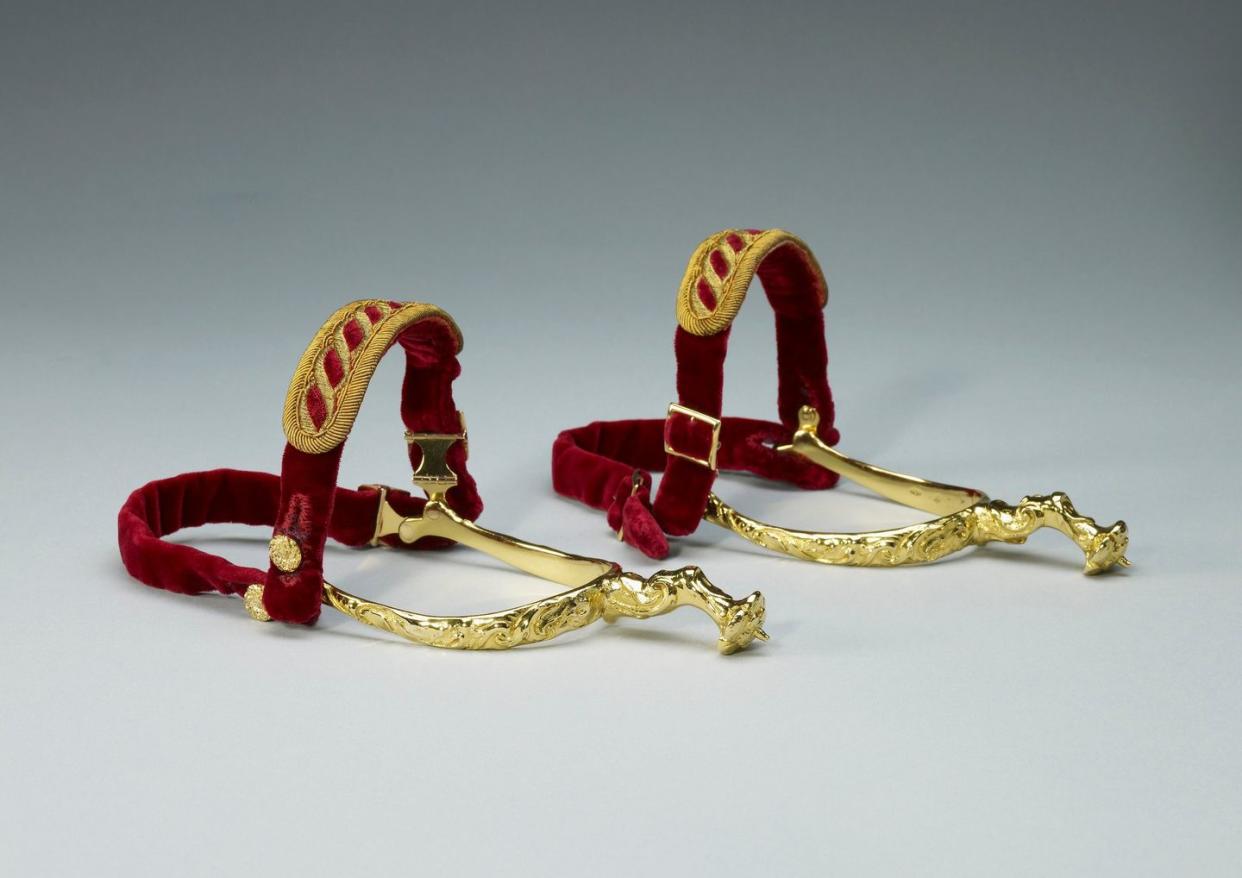
The Golden Spurs are the first items to be presented to the monarch and they represent knightly values and chivalry and the need to protect the weak. The first mention of spurs in a coronation ceremony is 1189 for Richard I. “There’s a lot of similarities with the investiture ceremony of a knight and the investiture of a new monarch,” Charles Farris noted. These 1661 spurs were made deliberately to look older.
The Jewelled Sword of Offering, which is presented next, is one of the few items in the regalia that does not date back to 1661 but instead was made in 1820 for the extravagant coronation of George IV in 1821. It is elaborately decorated with diamonds, rubies, emeralds and sapphires and the national emblems, roses, thistles, and shamrocks. “The idea is that a number of promises are made based on the knightly virtues and values of the monarch,” Charles Farris said. “The sword is a symbol of knighthood.” The monarch offers this at the altar then it is symbolically bought back for 100 shillings.
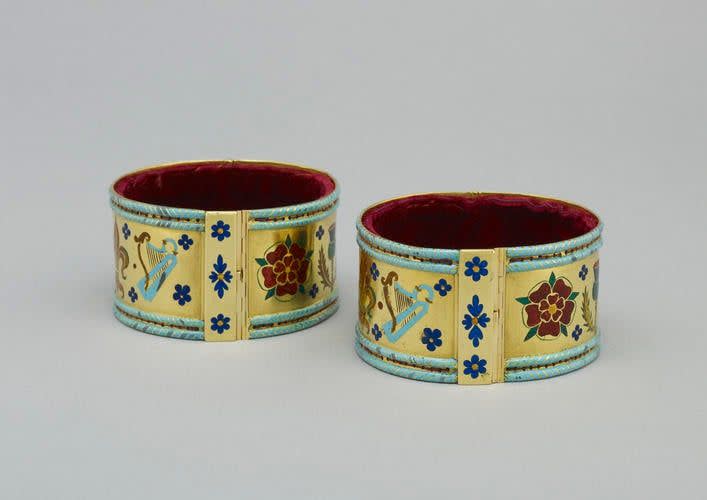
Then comes the presentation of the Armills, which are bracelets representing sincerity and wisdom. Queen Elizabeth was presented with a new set that were made specially for her coronation from the Commonwealth, however it is thought that Charles will be invested with the 1661 set.
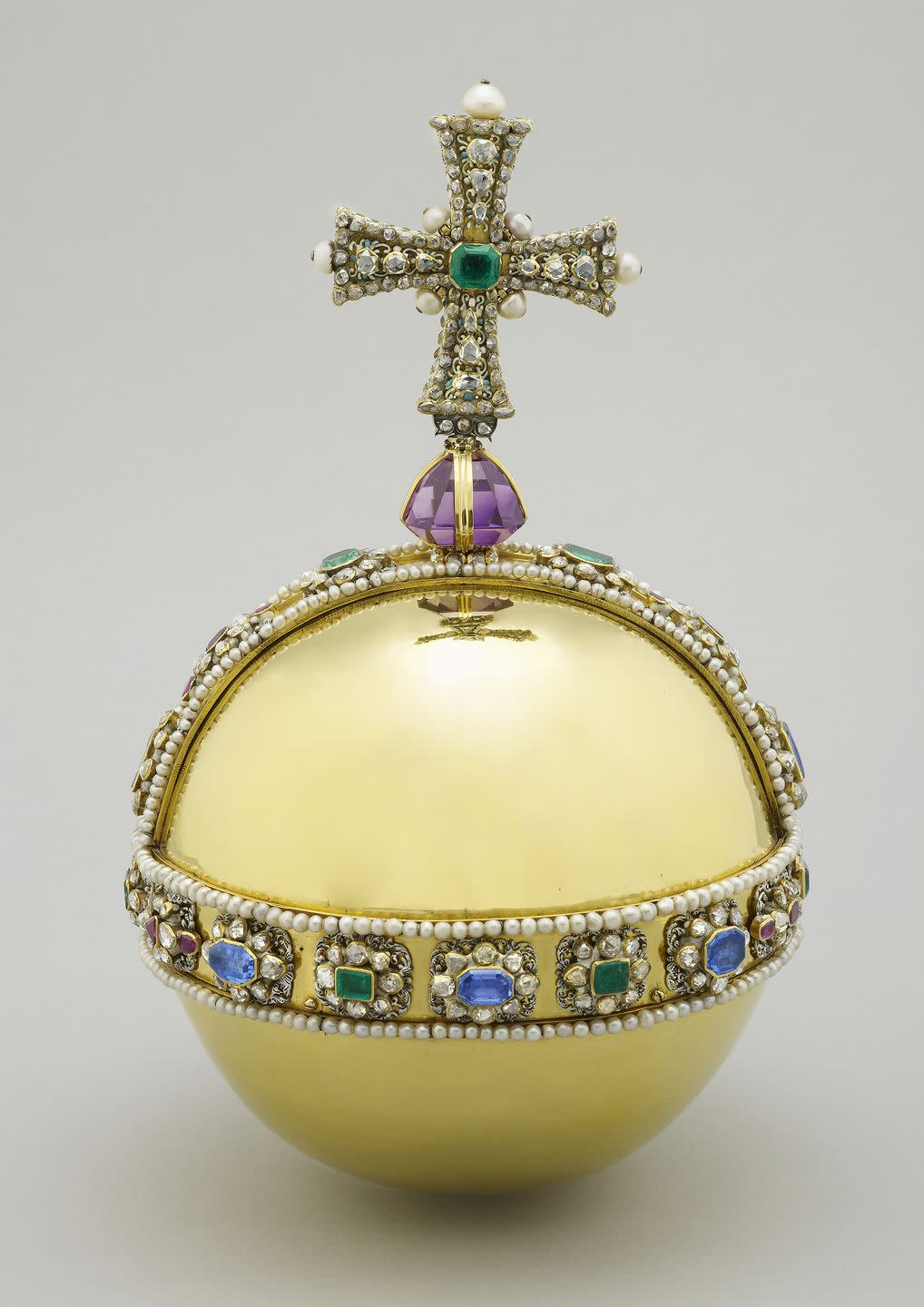
The Sovereign’s Orb is then placed in the right hand of the monarch, which represents the sovereign’s power and the Christian world. “It is divided into three to represent the then three-known continents of the medieval world,” said Charles Farris referring to the fact that in medieval England they believed the three continents were Europe, Africa and Asia. The orb is set with emeralds, rubies and sapphires surrounded by rose-cut diamonds, and single rows of pearls.
Next comes the Sovereign’s Ring, which is placed on the fourth finger of the monarch’s right hand. “It’s a symbol of constancy, it’s a symbol of bond with the office but also with the people and making a promise,” said Charles Farris. “Historically it’s sometimes been called the wedding ring of England.” The current ring was made for William IV’s coronation in 1831 and features a sapphire overlaid with rubies in the shape of a cross. Queen Victoria had a new, smaller ring, made for her 1838 coronation but it was mistakenly made for her little finger and she recorded in her diary how painful it was to take off after it had been forced onto her ring finger.
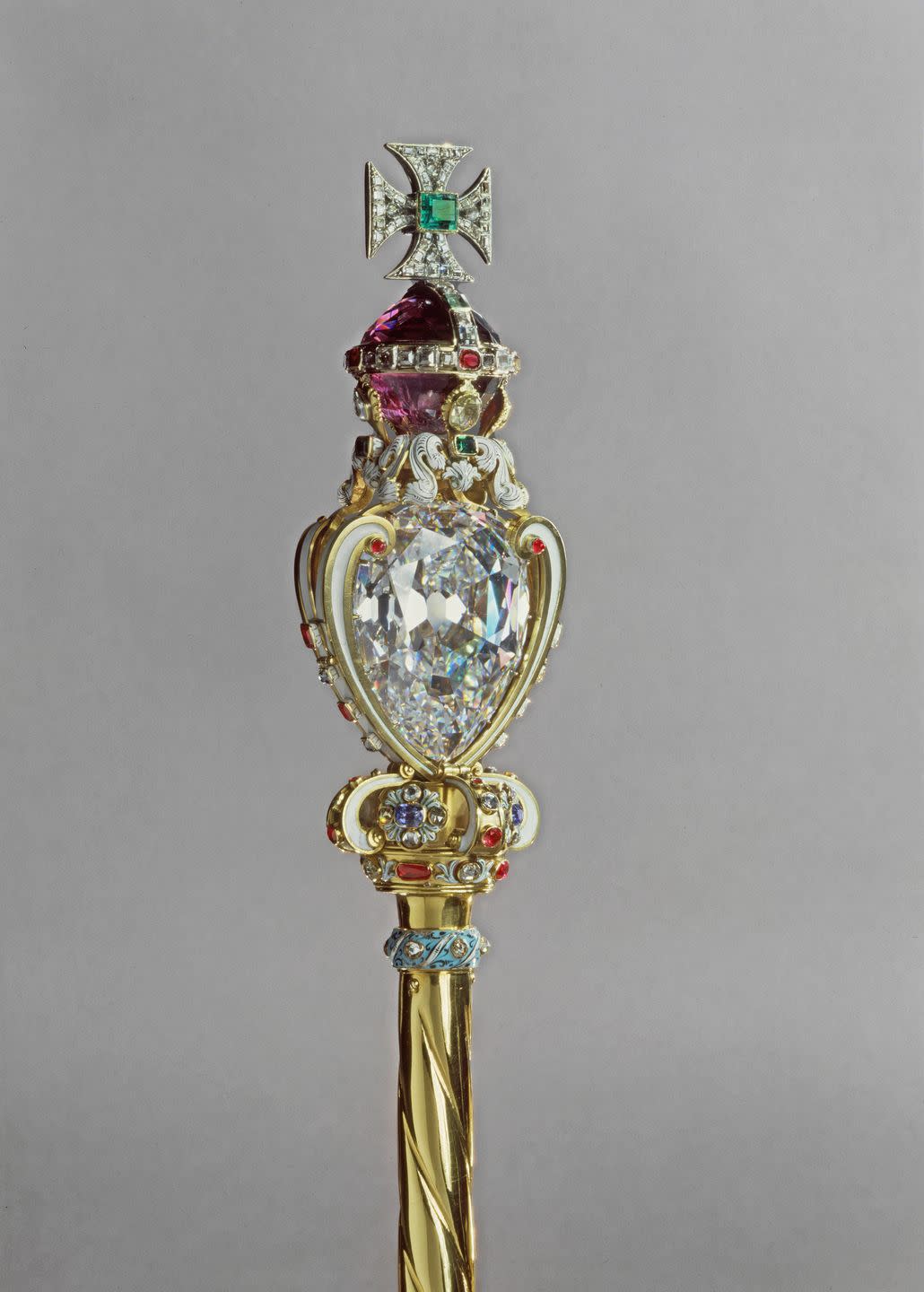
The final part of the investiture sees the sovereign given the Sovereign’s Sceptre With Cross in their right hand and the Sovereign’s Sceptre with Dove, which is sometimes known as the Rod of Equity and Mercy, in their left hand.
The sceptre with cross represents temporal power and good governance. It was created for King Charles II but received a major update in 1910 under the reign of King George V when the largest diamond cut from the Cullinan diamond, known as the Great star of Africa, was put into it. The Cullinan diamond was found in South Africa in 1905 and presented to King Edward VII in 1907 and there have been recent petitions for it to be sent back.
The sceptre with dove is a representation of the sovereign’s spiritual role and the enamel dove with outstretched wings is said to represent the Holy Ghost.
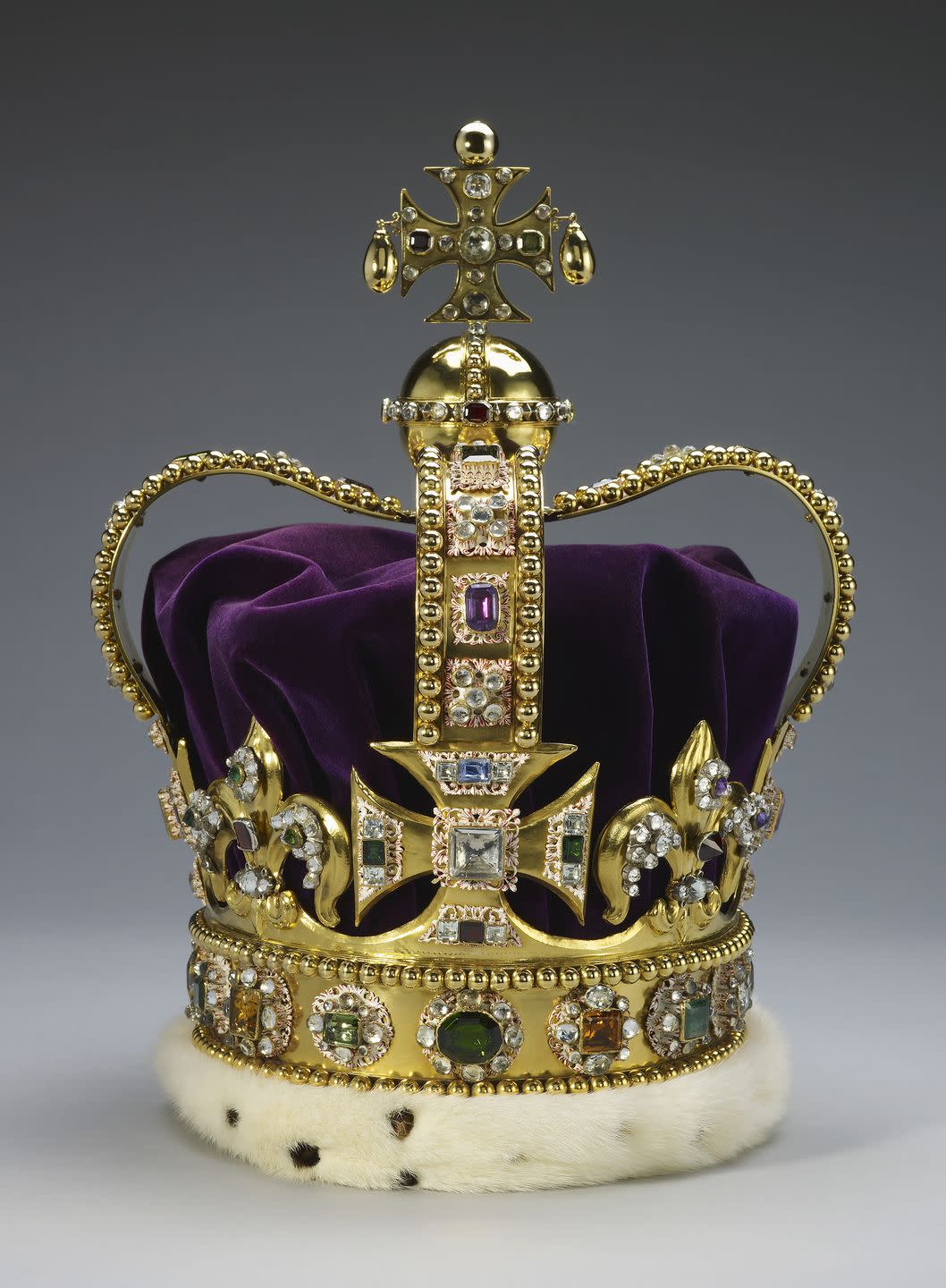
The culmination of the ceremony will be when the Archbishop places the St Edward’s Crown on King Charles’s head. This crown has been described as the “most important and sacred of all the crowns” and is used only for the moment of crowning. It is extremely heavy, weighing almost 5 lbs. It is topped with an orb and a cross, symbolizing the Christian world, and is gold set with 44 stones including rubies, amethysts, sapphires, garnet, topazes and tourmalines. It has been give its own Twitter emoji for the coronation.
The current crown was remade for the coronation of Charles II in 1661 but the original was thought to date back to Edward the Confessor (when he was made a saint after his death objects connected to him were declared holy relics). It was first recorded as being used at a coronation to crown Henry III in 1220. It actually hasn’t been used to crown every monarch in British history, as for around 200 years, from the reign of Queen Anne it was not used but placed on the altar. King George V brought back the tradition of using it for his 1911 coronation and it has been used for monarchs ever since.
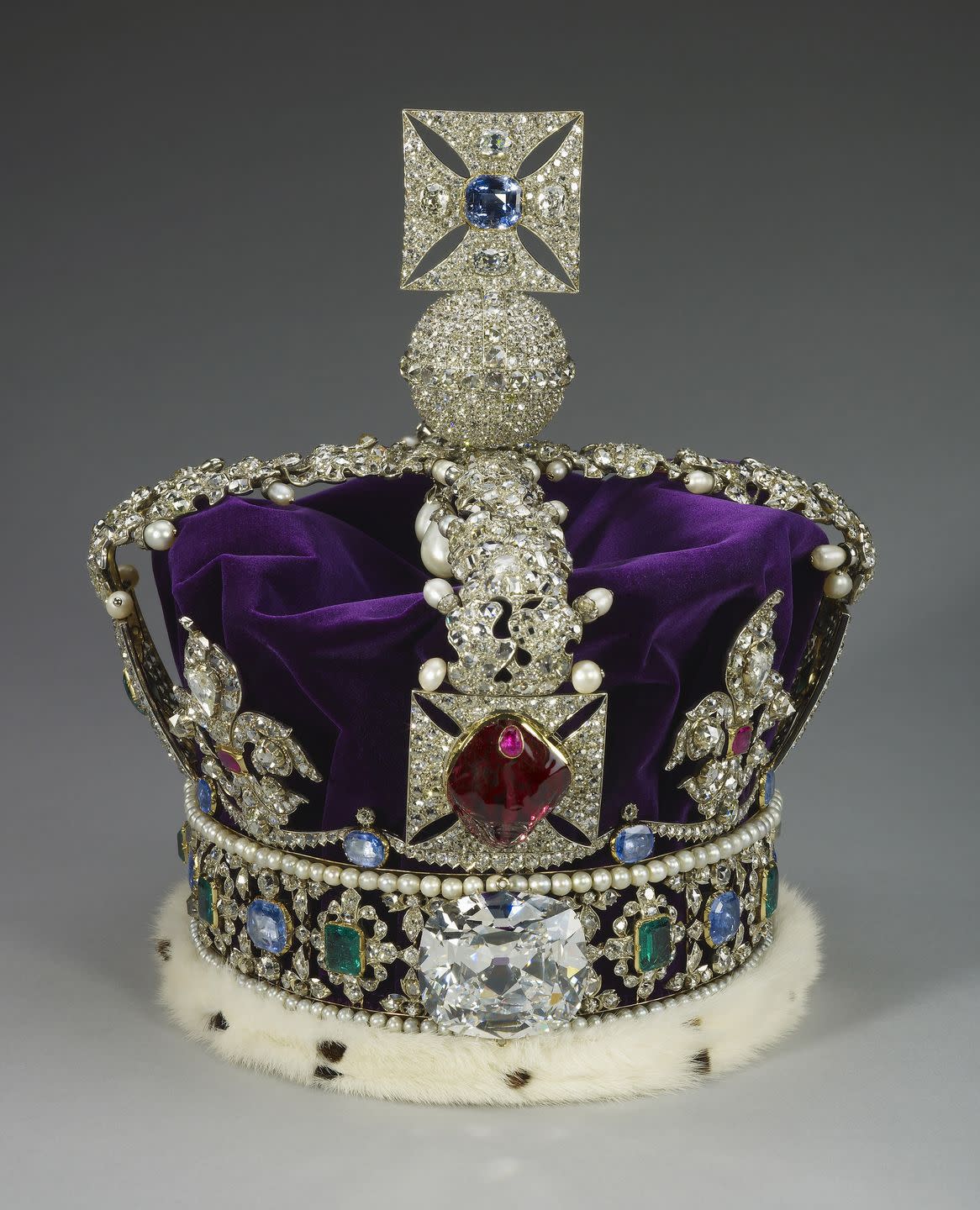
At the end of the ceremony, the King will replace the St Edward’s Crown with the Imperial State Crown to leave the Abbey. The current crown was made for the coronation of King George VI in 1937 and it contains the second largest stone cut from the Cullinan diamond. It also includes the St Edward’s Sapphire, which is said to have been worn in a ring by Edward the Confessor and discovered in his tomb in 1163. It contains almost 3,000 diamonds as well as sapphires, emeralds, pearls, and rubies.
This crown is also worn by the sovereign during the State Opening of Parliament and was on Queen Elizabeth’s coffin during her funeral service.
After the King is crowned, a separate ceremony will be held for Camilla where she will also be anointed and invested with her own set of regalia and crowned with Queen Mary’s Crown. You can read more about that regalia here.
You Might Also Like
